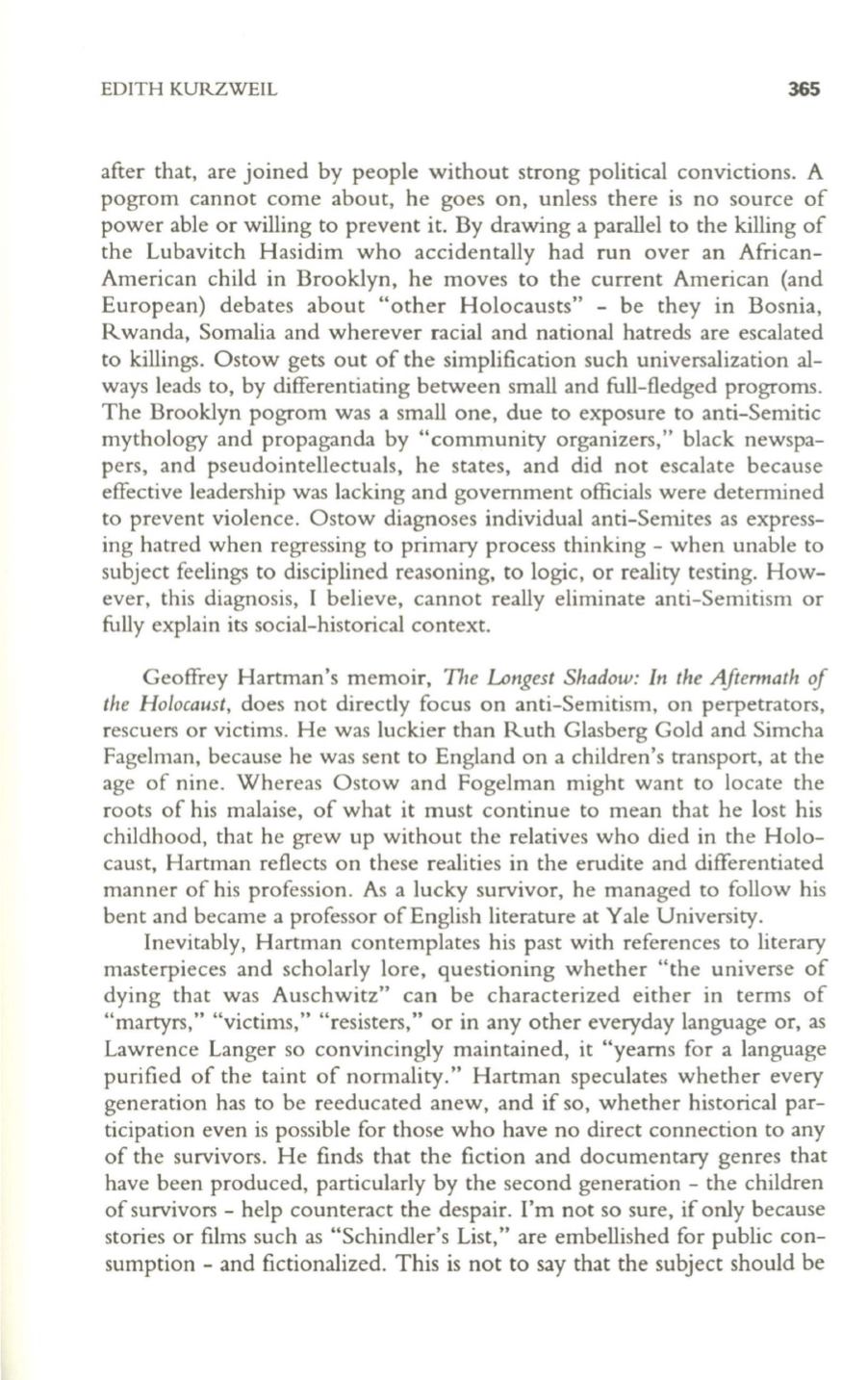
EDITH KURZWEIL
36S
after that, are joined by people without strong political convictions. A
pogrom cannot come about, he goes on, unless there is no source of
power able or willing to prevent it. By drawing a parallel to the killing of
the Lubavitch Hasidim who accidentally had run over an African–
American child in Brooklyn, he moves to the current American (and
European) debates about "other Holocausts" - be they in Bosnia,
Rwanda, Somalia and wherever racial and national hatreds are escalated
to killings. Ostow gets out of the simplification such universalization al–
ways leads to, by differentiating between small and full-fledged progroms.
The Brooklyn pogrom was a small one, due to exposure to anti-Semitic
mythology and propaganda by "community organizers," black newspa–
pers, and pseudointellectuals, he states, and did not escalate because
effective leadership was lacking and government officials were determined
to prevent violence. Ostow diagnoses individual anti-Semites as express–
ing hatred when regressing to primary process thinking - when unable to
subject feelings to disciplined reasoning, to logic, or reality testing. How–
ever, this diagnosis, I believe, cannot really eliminate anti-Semitism or
fully explain its social-historical context.
Geoffrey Hartman's memoir,
The Longest Shadow: In the Aftermath of
the Holocaust,
does not directly focus on anti-Semitism, on perpetrators,
rescuers or victims. He was luckier than Ruth Glasberg Gold and Simcha
Fagelman, because he was sent to England on a children's transport, at the
age of nine. Whereas Ostow and Fogelman might want to locate the
roots of his malaise, of what it must continue to mean that he lost his
childhood, that he grew up without the relatives who died in the Holo–
caust, Hartman reflects on these realities in the erudite and differentiated
manner of his profession. As a lucky survivor, he managed to follow his
bent and became a professor of English literature at Yale University.
Inevitably, Hartman contemplates his past with references to literary
masterpieces and scholarly lore, questioning whether "the universe of
dying that was Auschwitz" can be characterized either in terms of
"martyrs," "victims," "resisters," or in any other everyday language or, as
Lawrence Langer so convincingly maintained, it "yearns for a language
purified of the taint of normaliry." Hartman speculates whether every
generation has to be reeducated anew, and if so, whether historical par–
ticipation even is possible for those who have no direct connection to any
of the survivors. He finds that the fiction and documentary genres that
have been produced, particularly by the second generation - the children
of survivors - help counteract the despair. I'm not so sure, if only because
stories or films such as "Schindler's List," are embellished for public con–
sumption - and fictionalized. This is not to say that the subject should be


